Whats the difference?
|
ChrisWhyte Unregistered guest | My DVD player can apparently play with Doldy Digital, Pro Logic I and Pro Logic II. There is probably other stuff it can do too, but I'm curious, whats are they and whats the difference? Apologies if you are bored with newb questions like this. |
|
Gold Member Username: Jan_b_vigneDallas, TX Post Number: 4085 Registered: May-04 | It's not that we're bored so much as you can find the answer to your question by putting something like "Dolby Digital" into a search engine. Here, I've done that for you: http://search.yahoo.com/bin/search?p=dolby%20digital |
|
Silver Member Username: DmwileyPost Number: 797 Registered: Feb-05 | Great post Jan. |
|
ChrisWhyte Unregistered guest | Yeah man that was awesome. |
|
Silver Member Username: Thx_3417Bournemouth, Dorset United Kingdom Post Number: 372 Registered: May-05 | Chris Hallo there First off "Dolby" pro-logic was developed for the cinema industry in the early 1970's for an affordable cost approach and getting more cinema houses to install to this new up grade with "NR" noise reduction "A" Type that was developed in the late 1960's for the recoding music industry. "A" Type was first used on "Callan" in the early 1970's which was a Mono release this was applied to the "SVA" stereo variable area. Star Wars was the word and more cinemas where installing Dolby CP-50 units and CP-100 for the road show events like 70mm six-track magnetic sound with A Type encoded on to the full spectrum uncompressed magnetic tracks, with a frequency range from 30Hz to18KHz better than most and still is the best sound around unlike Dolby Digital which uses compression to fit all the six-full range channels in-between the perforation near the sprocket hole on the 35mm film with other Digital sound formats like dts which as a pulse coding looking like Morse code. 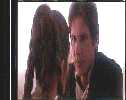 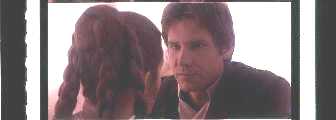 Enter "SDDS 8" now this is a multi-channel format with five full range channels placed behind the screen and two split-stereo surrounds and one LFE sub bass track the encoding is placed on both sides of the 35mm film on the outsides, all these need special modified video cameras that bounce a beam of light onto the film and is picked up by the video camera and goes to the decoder for translation and the final process is magic, we now have multi-channel sound, and unlike the Todd-Ao era which came up with the 70mm six-track magnetic process multi-channel as been around for a long, long time with fantasia in the late 1940's. Also there is dts 70mm which is a great format not much around any more, but some cinemas still playing this format at special 70mm events. 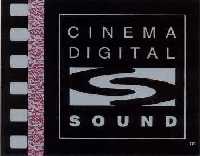 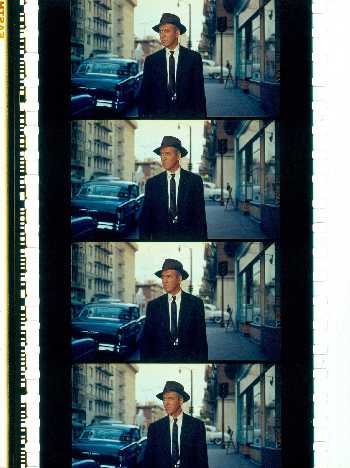 Also the "CDS" cinema digital sound was the first true sound for the cinema industry and the sound was encoded onto the film print full six-track spectrum sound, this came around in the early1990's and lasted for a short while due to not being backward compatible and Dolby took over with there own digital format that is yes still around, "Baby boom" was a Dolby process that was used first on "Star Wars" and "close encounters of the third kind" And sounded awesome if you where lucky enough to hear it and feel it. Dolby CP-500 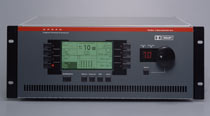 Dolby CP-65 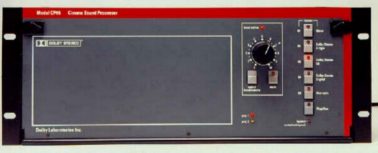  The matrix was a modification form the old Quid era like "SQ 4" if I'm not mistaken that "Dolby" made better and is still in use in cinemas that run the cheaper "Dolby" CP-50 CP-65 and CP-45 units with some having Type "SR" spectrial recording that was used for the music industry and quickly found it's way into the film industry and films like "Innerspace" 1987 and "Robocop"1987 which won the Oscar for best sound effects editing. The matrix does have crosstalk problems with sound from the left and right front causing masking or over lapping sounds to mask complex quieter sound within the centre channel, and also with the surround channel no mater how well you mix it, it will always have cross-talking errors. As for the Dolby pro-logic II, I have noticed there is more crosstalk generated with this process and all though some say it's fantastic with music on Dolby pro-logic II music mode, which as no reference to sound source unlike films where you can see and hear the differences within the mix. The artificial stereo surround process is a neat way of giving more spaciousness to the sound; I'm all ready again thinking like a projectionist, to see what ideas I can come up with in using this for Dolby digital enhancement? Well I'm tried and I'm of to bed now catch you later.  Easter egg extras Dolby home page http://www.dolby.com/ In-70mm Dolby stereo 70mm http://www.in70mm.com/library/70mm_in/dolby_stereo.htm In-70mm Todd-Ao http://www.in70mm.com/newsletter/2005/70/dan/leimeter.htm In-70mm life with THX http://www.in70mm.com/newsletter/1997/51/thx/life_1.htm In-70mm Newsletter http://www.in70mm.com/newsletter/1997/50/tbp/sound.htm In-70mm showscan http://www.in70mm.com/library/formats/showscan.htm In-70mm news letter Dolby http://www.in70mm.com/newsletter/2000/62/dolby/index.htm In-70mm Digital sound http://www.in70mm.com/newsletter/1996/46/70mm/digital_sound.htm In-70mm dts 70mm http://www.in70mm.com/newsletter/1996/46/dts/index.htm In-70mm restoration http://www.in70mm.com/newsletter/1999/59/film/restoration.htm In-70mm Imax http://www.in70mm.com/newsletter/1997/48/tbp/projector.htm In-70mm vertigo dts 70mm http://www.in70mm.com/newsletter/1996/46/dts/vertigo.htm In-70mm library http://www.in70mm.com/library/70mm_in/cds.htm In-70mm Star wars openings http://www.in70mm.com/news/2003/star_wars/star_wars_openings.htm In-70mm Alien 70mm http://www.in70mm.com/news/2003/70mm_release/alien_openings.htm In-70mm 2001: A Space Odyssey http://www.in70mm.com/news/2004/2001/presentation.htm Part 1 Sensurround http://www.in70mm.com/newsletter/2004/69/sensurround/intro.htm Part 2 Sensurround http://www.in70mm.com/newsletter/2004/69/sensurround/about.htm dts http://www.real-image.com/dts/dtstrack.gif SDDS home page http://www.sdds.com/about.cfm SDDS part 1 http://www.sdds.com/about_what.cfm SDDS part 2 http://www.sdds.com/about_what_1.cfm SDDS part 3 http://www.sdds.com/about_qa.htm |
|
ChrisWhyte Unregistered guest | Wow thats some great detail there. I never realised there was so many different benchmarks and methods used in motion pictures. I also never knew how the sound was actually played with the picture, all that timecode stuff is quite interesting. |
Main Forums
Today's Posts- Home Audio Forum
- Home Video Forum
- Home Theater Forum
- Car Audio Forum
- Accessories Forum
- All Forum Topics